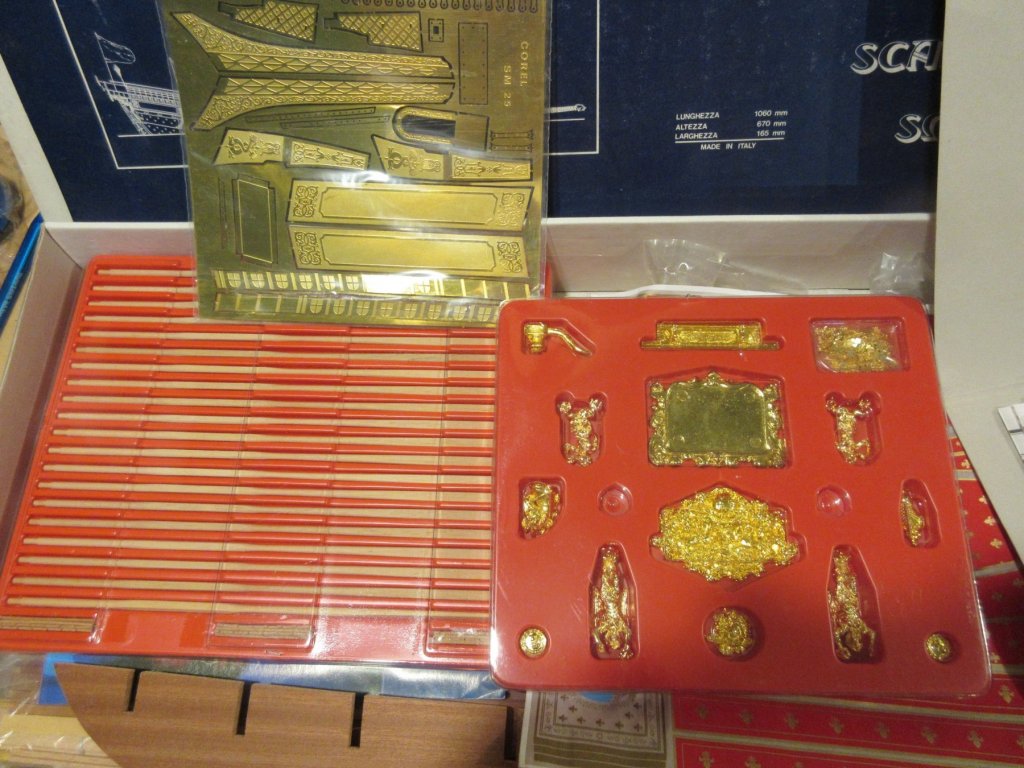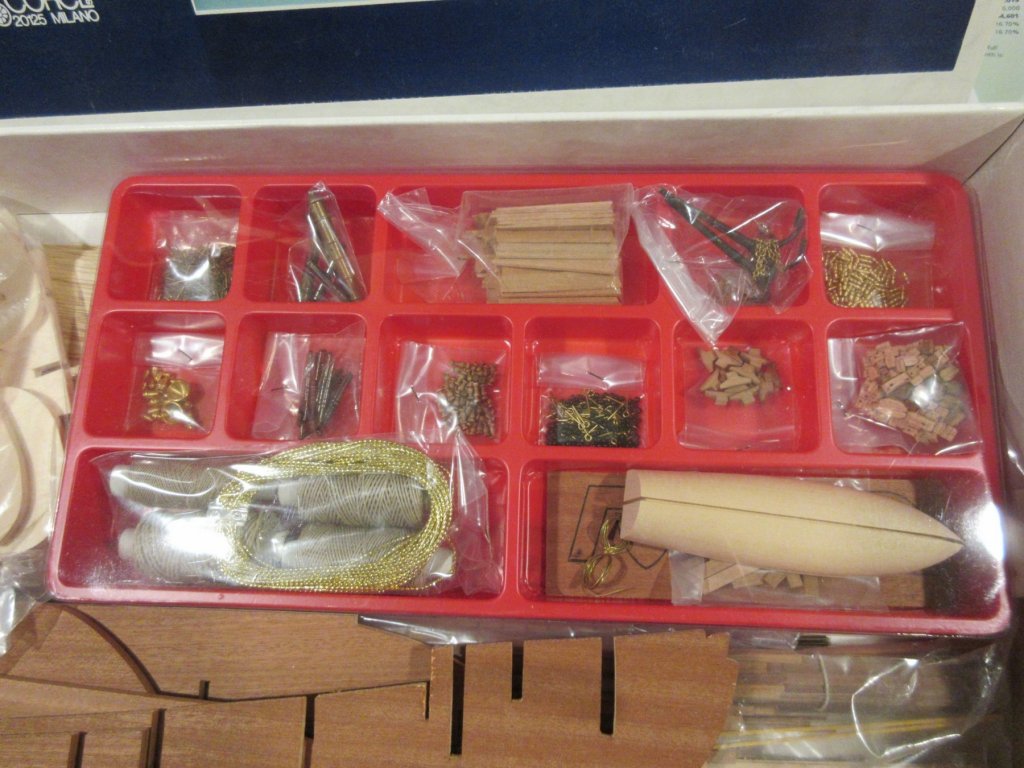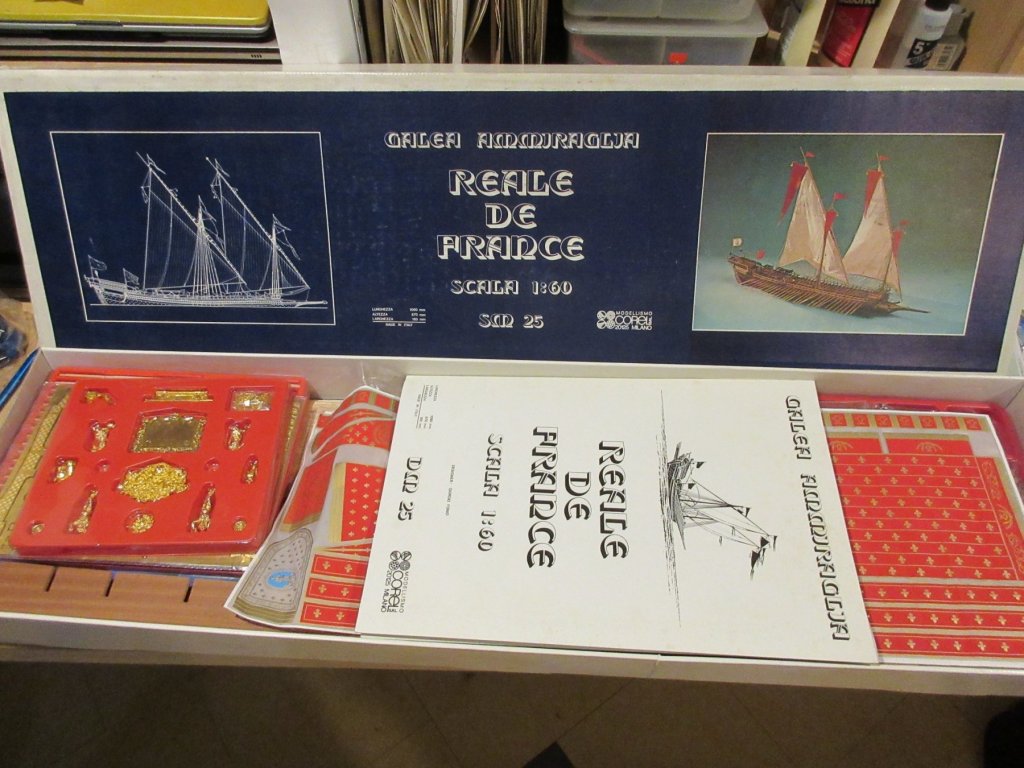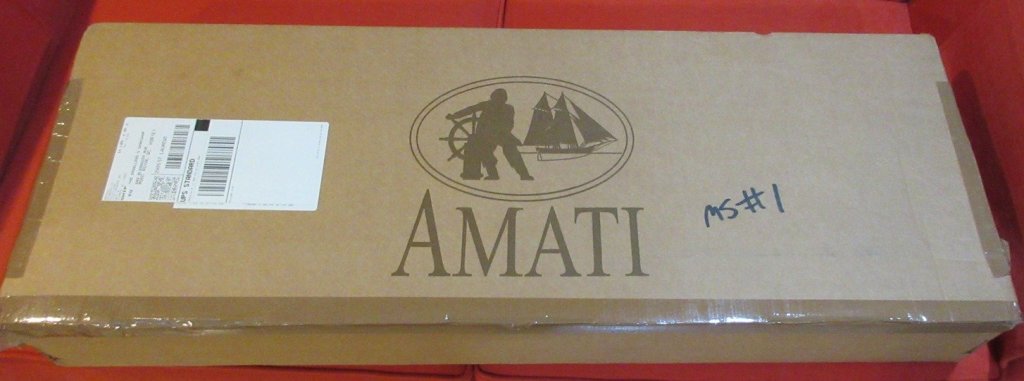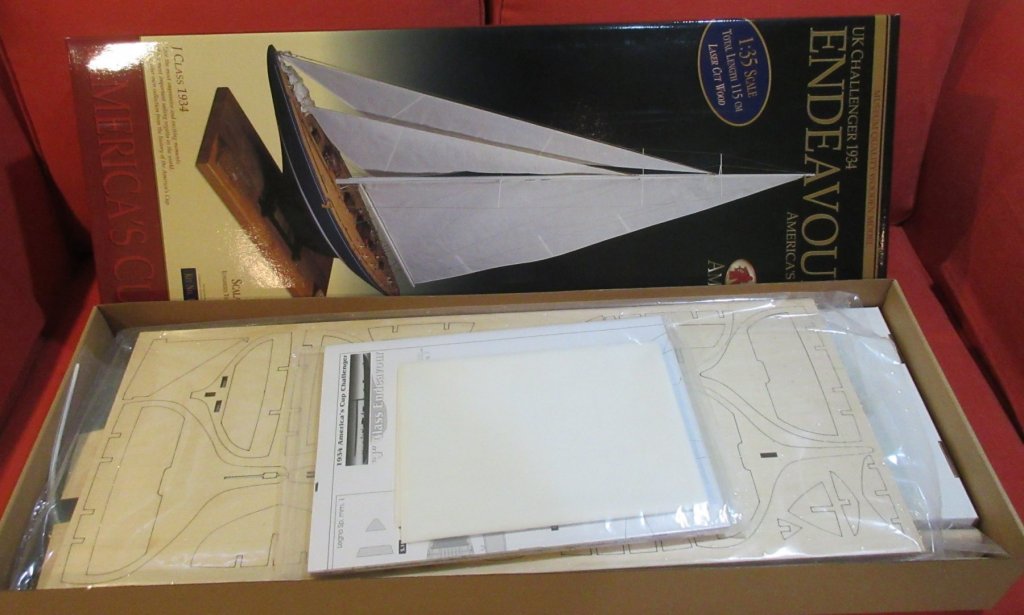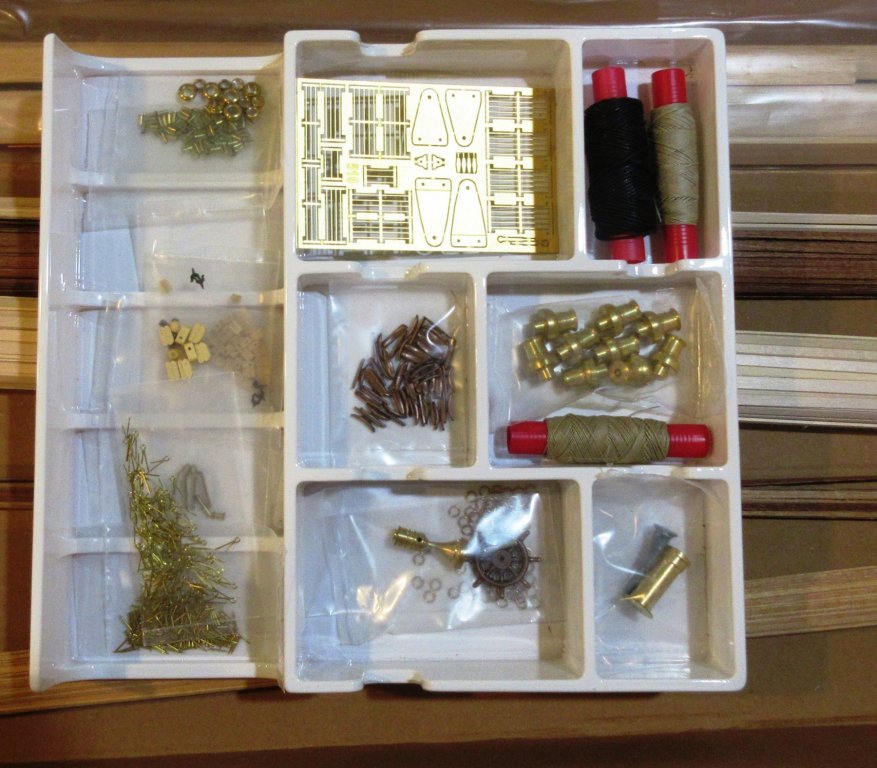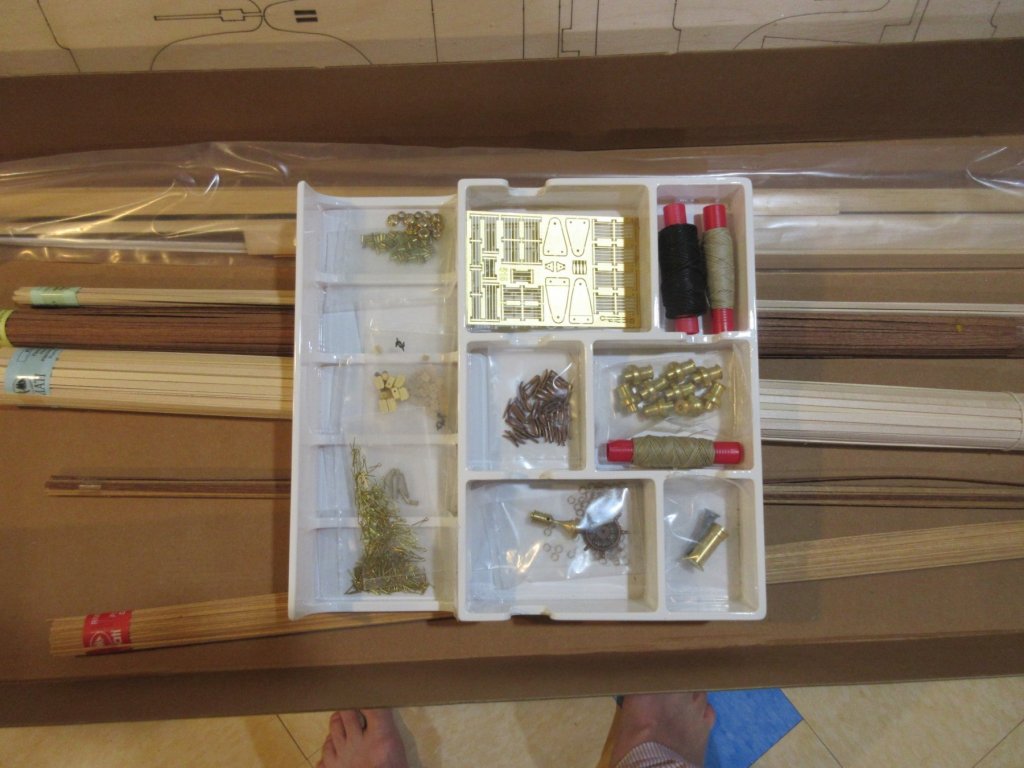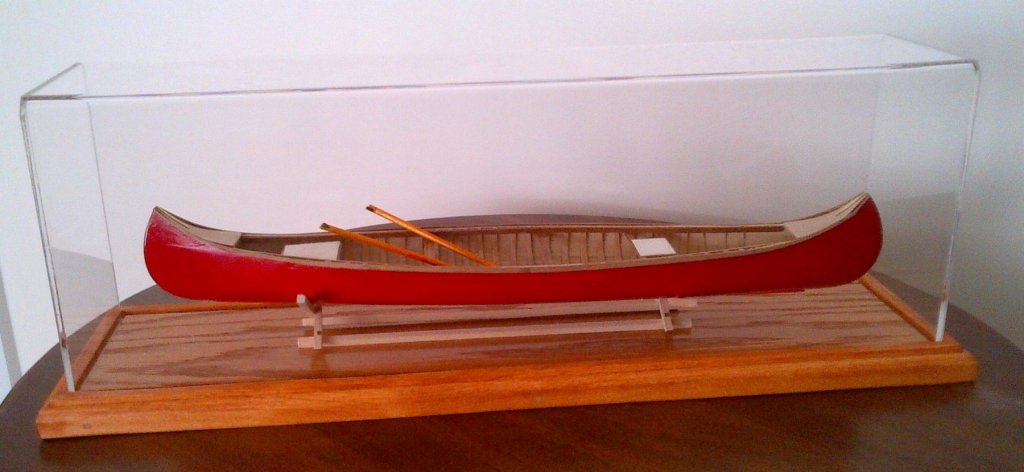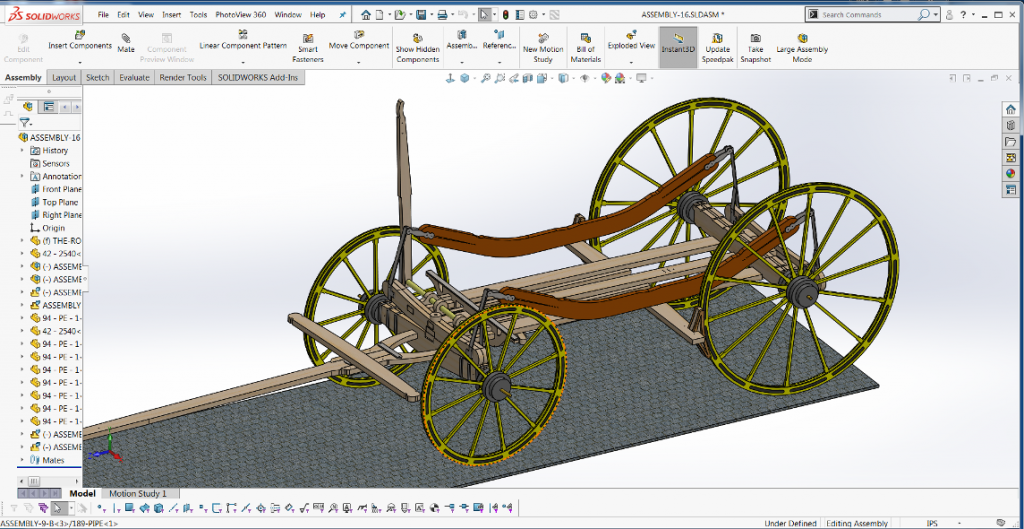-
Posts
431 -
Joined
-
Last visited
Content Type
Profiles
Forums
Gallery
Events
Everything posted by rshousha
-
Indeed, I know the prices of these models quite well but when they have to go, they have to go. This particular kit has been bothering me for ages because It looks really fabulous but is just too big for my workshop and display area. Yes, of course I can give it away once it's done but I want to build stuff that I can display at home now. After sending almost twenty Pocher kits, and a couple of airplanes, away it's time to build stuff for my own display. So, there it is; time to go. Cheers, Rick
- 10 replies
-
- reale de france
- kit
-
(and 2 more)
Tagged with:
-
These are funny responses. Now, I'm not sure I want to sell the kit. Honestly, the first reasonable offer will be accepted. I have zillions of Pocher kits waiting to be built and yet I spend all my free time designing stuff in CAD. It's not so much that I don't want to build the kit; it's more a question of not having the time to start it, not having the space to display it, and knowing what it will take to do as good a job as I would like to do. I have four kits actually on the go at the same time, and I want to clean up my space. I need space. OK, let's say anything north of $300 USD, shipping included, and the kit is yours. Cheers, Rick
- 10 replies
-
- reale de france
- kit
-
(and 2 more)
Tagged with:
-
Greetings, Up for sale is one SM25 Reale de France kit. A few years ago, I was in the Musee de La Marine in Paris, and I HAD to get this kit. Over the last few years I've taken it out a dozen times, had a close look, and put it back for another day. Now it has to go. The subject is wonderful and the scale of the kit is excellent. The instructions are the usual Corel instructions and the plan sheets are really nice, as with all Corel kits. I've built a couple of Corel kits and I do find them quite acceptable. However, there are many other kits out there I would prefer building. Any reasonable offer will be accepted but please remember that shipping from Montreal is about $60 USD across the USA and $40 CDN, or so, across Canada. If you are overseas, please let me know and I'll work out the shipping cost for you. Beyond the actual cost of shipping, pretty well any reasonable offer will be accepted. As I said, it has to go. Thanks for looking, Rick
- 10 replies
-
- reale de france
- kit
-
(and 2 more)
Tagged with:
-
Hello Andre, Sadly, you are right. Over the years, I tried many of the less expensive software packages and always seemed to have the same experience as you. Eventually, I decided to spend the money, go back to school (900 hour course) and then spend the money on a real computer and a full Solidworks license. I justified the cost because the whole thing is about the same cost as a typical hobby. The only thing is you have to consider the CAD itself as the hobby, and not just a tool that you use once in a while. Once you've done that, the whole education thing changes completely. Once you are paying into the game, you have instant, or nearly instant, access to really excellent technicians and you also have access to parts of forums that are only accessible to people who pay. It's a bit of a stretch to make the decision to pay into one of these fancy-pants products but the difference, if you use it to do some interesting work, is well worth the cost to play. p.s. I'm a big fan of Autocad but I am mostly doing design for manufacturing and the 3D packages are better for that. One of these days, I want to get back to Autocad to make some really nice drawings of stuff. Regards, Rick
-
Actually, you can setup a good laptop for doing CAD but it costs a little more than usual. As a professional Solidworks and Solid Edge user, I use a very fine website that HP has for business machines. You can load up your laptop to handle pretty well any software you can think of. My old HP used to heat my office and needed a large fan underneath as well as a house fan blowing across my desk constantly, in order to ward off the BSOD. My new machine will handle over 300 parts before the internal fan turns on. I never have to wait for a feature to process, either. I don't remember how many I7 cores it has, or what graphics card I put in there but I do know it has 2 TB of SSD and that, also, makes a huge difference in speed. (I have no shares in HP, either). All this 3D CAD stuff has become a big part of my hobby, too. The good computer really helps!
-
What an amazing project! I wonder how many people can reach back into their youth like that. I have an old Raleigh racing bicycle with which I had a head-on collision with a car in 1979. I never got back on the bicycle and I still have it, rusty but usable. Restoring it would make a cool project.
- 740 replies
-
- Tudor
- restoration
-
(and 4 more)
Tagged with:
-
For sale is one unstarted, new, Amati Endeavour 1700-85 1/35 scale kit. I've had this kit for several years, and would love to build it, but I think it will be 2025 before I get around to it. It's time for the kit to go to someone who is interested in building her sooner than that. The price is negotiable. Shipping will be $60 USD anywhere in the US. Thanks for looking.
-
Hello Gunther, Do you still have the instructions for this canoe? I built one a couple of years ago and would like to build another but I think I put the plans in the recycling at some point.
- 11 replies
-
- indian girl canoe
- Midwest Products
-
(and 1 more)
Tagged with:
-

Swan class 3D model in progress
rshousha replied to dvm27's topic in CAD and 3D Modelling/Drafting Plans with Software
Very, very, nice work!- 141 replies
-
- pof swan series
- swan
-
(and 1 more)
Tagged with:
-
Hi Gaetan, I use Solidworks professionally and enjoy building models in 3D as a hobby. I find it most interesting to see how the parts fit, I don't need glue or paint, and I can zoom in to areas as much as I like. I can also build models wherever I am, from my office in Montreal, to the resort in St-Lucia. I've attached a picture of my latest project, a 1:6 scale version of a western stagecoach. Of course, I have done many ships but you seemed to be interested in the textures and colors that you can get. In this model, you can turn the wheels, apply the brakes, change direction, and even see the functioning of the support mechanism for the passenger compartment, which is still "under construction". Of course, there is a drawing made for each part, if someone ever wanted to make this in the future. Even the spokes are all separate pieces. Best Regards, Rick
-
Here's another point I just remembered as I'm working on my latest model. When you extrude your bulkheads you need to anticipate the faring process. In other words, the frames towards the bow will be sanded down in one direction while the frames towards the stern will be sanded down in the opposite direction. There are only a few frames in the middle which will be sanded down evenly. So, in order for the lines to remain true, you need to extrude the forward frames towards the bow and the rear frames towards the stern. Then, you simply fare in the direction of the planking but just up to the edge of the bulkhead. If you just leave that outer edge (the stern edge of the frames in the bow section and the forward edges of the frames in the rear section) you will be right at the lines you traced. If you extrude all the frames mid-plane, then your boat will be too small in the bow and the stern (unless, of course, you leave gaps and only fare half the bulkhead). OK, now who actually was able to follow that? Cheers, Rick
-
Greetings, With any good 2D or 3D software there are offset features to move a line one way or another. So, with a couple of clicks you can move the spline the exact thickness of your planking. Generally, I decide how many layers of planking will be used and I estimate 30% of each layer will be sanded off when faring a model. This gives me my offset dimension. Actually, very few of the models I make are for museums. Most are for racing sailboats and the dimensions need to be quite accurate to conform with class rules. Generally, also, the lines for these models are quite spartan and one has to be creative to get a nice shape. With about 45 years of experience racing sailboats I have a good eye for what will be fast. It's all good fun! Regards, Rick
-
Hello Moxis, I think there is another way to look at this problem, which expands on the post above, that will be much easier for you and more accurate. From your .pdf scan, you can take PRT SC of the various views you have and simply insert these in your favorite 2D or 3D program. You can then set the dimensions you want for the part and use the spline features to simply trace out the lines. This will give you much better accuracy than any scanning of the lines themselves. You do not count on the dubious algorithms of the scanning programs; you make your own decisions. Also, remember the originals are based on the outside lines of a ship and don't compensate for an offset that you will need since you are making the bulkheads and then planking over those. You really need to plan for that or your end product will be bigger than the scale you are considering. Plus, you will need to design a keel into the structure. The lines you have end in the original keel width. One way or another you need to cut a new keel into the bulkheads while keeping in mind the offset for the planking as well as the thickness of the wood you will use. Having done close to a hundred of these projects, I can tell you it's easier to forget about scanning technology and just go for it on your own. FANCY IMPROVEMENT: If you want to go crazy with these projects, you can start with 3D software and use surfacing techniques to increase the number of bulkheads. You simply make up the few bulkheads that are included in your lines and then simply loft a surface between the bulkheads. From there you can easily cut the surface and create intermediate bulkheads. For the sake of keeping things square, you can create waterline parts that run all the way along your ship, setting absolutely everything square. This helps a lot if you are making a really big model. Have fun! Rick
-
Ahh, OK, I see. Indeed, there are two versions of the Spline tool in Solidworks (your spelling is excellent, by the way) for 2D drawing, and one of them probably has the algorithm you noted above. However, I would just not worry about that. Since I am an older fellow, I do remember some interesting algorithms from my days in Electrical Engineering in the '80s, when Computer Engineering was the new kid on the block. Yes, I actually do know how Google finds things. I would say forget about all that. Just use whatever feature kind-of works and practice, practice, practice, until you beat it into submission. The power of current computers is so far above anything we actually see that thinking about how it is working will just slow you down. You should look at learning one of the CAD programs more like playing a musical instrument than learning a computer program. As with music, expect it to take 10,000 hours of conscious practice to learn. And I say this as an EE who spent years really tinkering with algorithms and programming. They are quite useless to me now. Now, I need to create content; get that creativity out from where it's been stifled for the last forty years. Regards, Rick
-
Greetings. To those who have been waiting breathlessly for me to get back to working on this model, I wanted to let you know that I have a new pair of glasses on the way. Perhaps I will be able to see the thing. In the meantime, I am currently working on a 1/10 scale stagecoach kit from Amati. Since it has nothing to do with ships, I won't be posting it here but it sure is a nice kit. Cheers, Rick
-
Hi Don, It's nice to see this build moving along. Sorry I've been away from "real" modelling for a while now. I'm heavily into 3D building these days, specifically designing some parts for a "major manufacturer" for a new kit they're building. With my eyesight not very good, I have a great time with 3D building as I can zoom in as much as I like. I'll be continuing to follow this build as you move along. ...and, yes, I will eventually get through the Pickle model... Cheers, Rick
- 223 replies
-

SOLEIL ROYAL 1669 by michel saunier
rshousha replied to michel saunier's topic in - Build logs for subjects built 1501 - 1750
This is a masterpiece. C'est un chef-d'oeuvre. Merci. -

3D-printing for modellers?
rshousha replied to Jean-Pierre's topic in Modeling tools and Workshop Equipment
Hi, Are you using your own printer or just Shapeways? I want to get my own and I've narrowed the search to the Formlabs 2. It seems like the right technology for organic surfaces like ships' decorations. I guess my question should have been Z-brush, Mudbox, or Maya? I already have software for manufactured items. I'm looking for software for carved and sculpted items now. Thanks, Rick
About us
Modelshipworld - Advancing Ship Modeling through Research
SSL Secured
Your security is important for us so this Website is SSL-Secured
NRG Mailing Address
Nautical Research Guild
237 South Lincoln Street
Westmont IL, 60559-1917
Model Ship World ® and the MSW logo are Registered Trademarks, and belong to the Nautical Research Guild (United States Patent and Trademark Office: No. 6,929,264 & No. 6,929,274, registered Dec. 20, 2022)
Helpful Links
About the NRG
If you enjoy building ship models that are historically accurate as well as beautiful, then The Nautical Research Guild (NRG) is just right for you.
The Guild is a non-profit educational organization whose mission is to “Advance Ship Modeling Through Research”. We provide support to our members in their efforts to raise the quality of their model ships.
The Nautical Research Guild has published our world-renowned quarterly magazine, The Nautical Research Journal, since 1955. The pages of the Journal are full of articles by accomplished ship modelers who show you how they create those exquisite details on their models, and by maritime historians who show you the correct details to build. The Journal is available in both print and digital editions. Go to the NRG web site (www.thenrg.org) to download a complimentary digital copy of the Journal. The NRG also publishes plan sets, books and compilations of back issues of the Journal and the former Ships in Scale and Model Ship Builder magazines.



